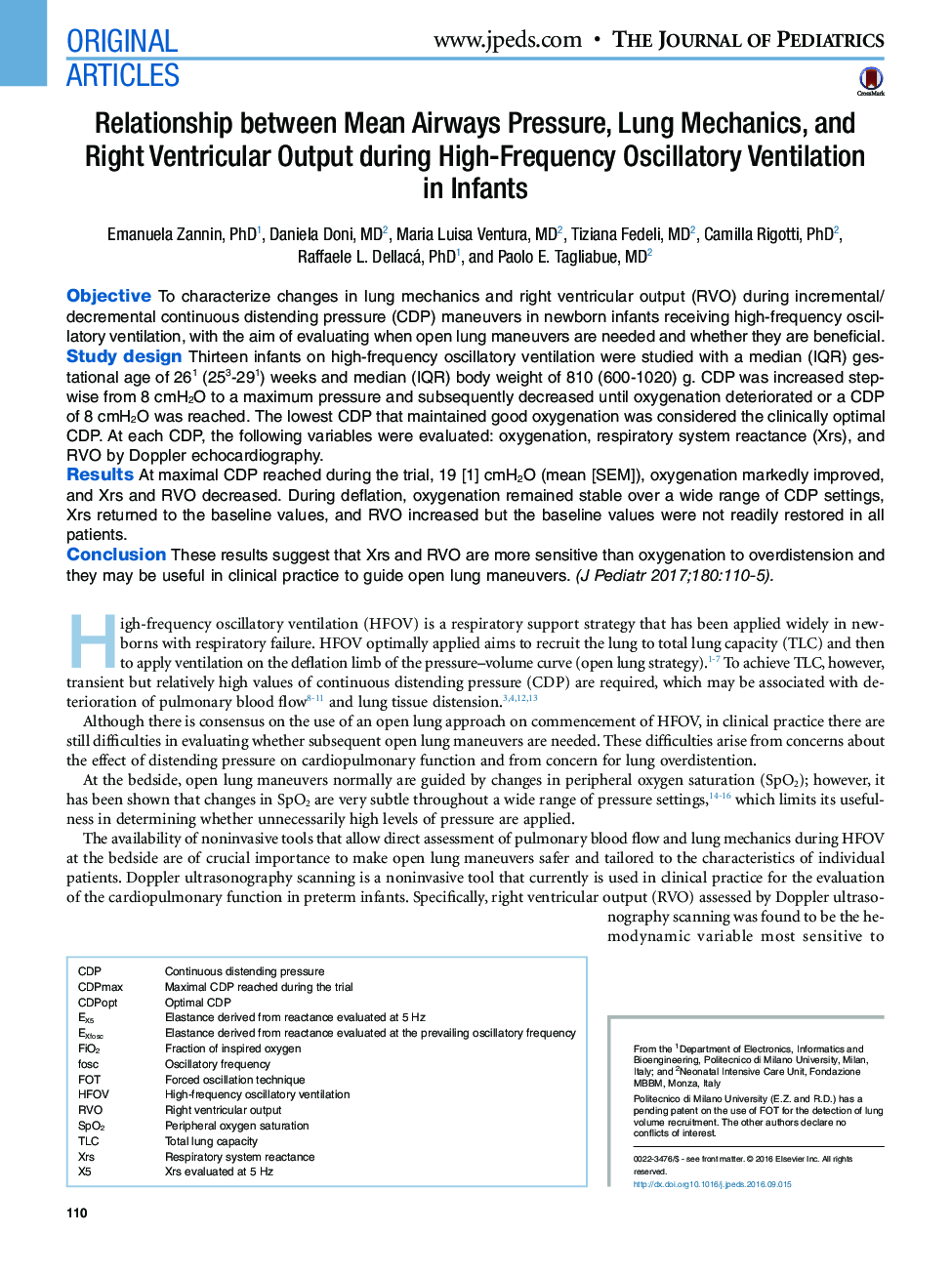| Article ID | Journal | Published Year | Pages | File Type |
|---|---|---|---|---|
| 5719294 | The Journal of Pediatrics | 2017 | 6 Pages |
ObjectiveTo characterize changes in lung mechanics and right ventricular output (RVO) during incremental/decremental continuous distending pressure (CDP) maneuvers in newborn infants receiving high-frequency oscillatory ventilation, with the aim of evaluating when open lung maneuvers are needed and whether they are beneficial.Study designThirteen infants on high-frequency oscillatory ventilation were studied with a median (IQR) gestational age of 261 (253-291) weeks and median (IQR) body weight of 810 (600-1020) g. CDP was increased stepwise from 8 cmH2O to a maximum pressure and subsequently decreased until oxygenation deteriorated or a CDP of 8 cmH2O was reached. The lowest CDP that maintained good oxygenation was considered the clinically optimal CDP. At each CDP, the following variables were evaluated: oxygenation, respiratory system reactance (Xrs), and RVO by Doppler echocardiography.ResultsAt maximal CDP reached during the trial, 19 [1] cmH2O (mean [SEM]), oxygenation markedly improved, and Xrs and RVO decreased. During deflation, oxygenation remained stable over a wide range of CDP settings, Xrs returned to the baseline values, and RVO increased but the baseline values were not readily restored in all patients.ConclusionThese results suggest that Xrs and RVO are more sensitive than oxygenation to overdistension and they may be useful in clinical practice to guide open lung maneuvers.
